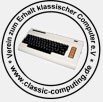Alles anzeigen
You are right:
17 passes in about an hour.
Ich habe einen 74S08 auf einer ISA-Karte gefunden und teste den grad.
Wasn’t going to be that easy was it ….. I re-read some of the superpet gazette articles and they reported no known issues with the single board version. Will power up my SP and check out the IC’s used ..


